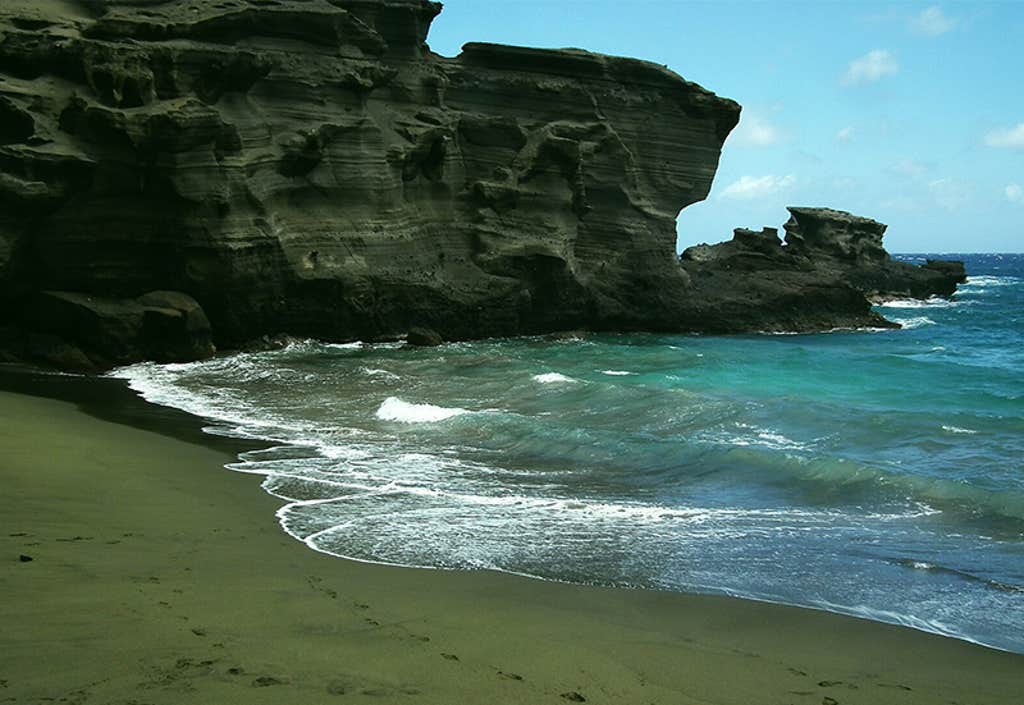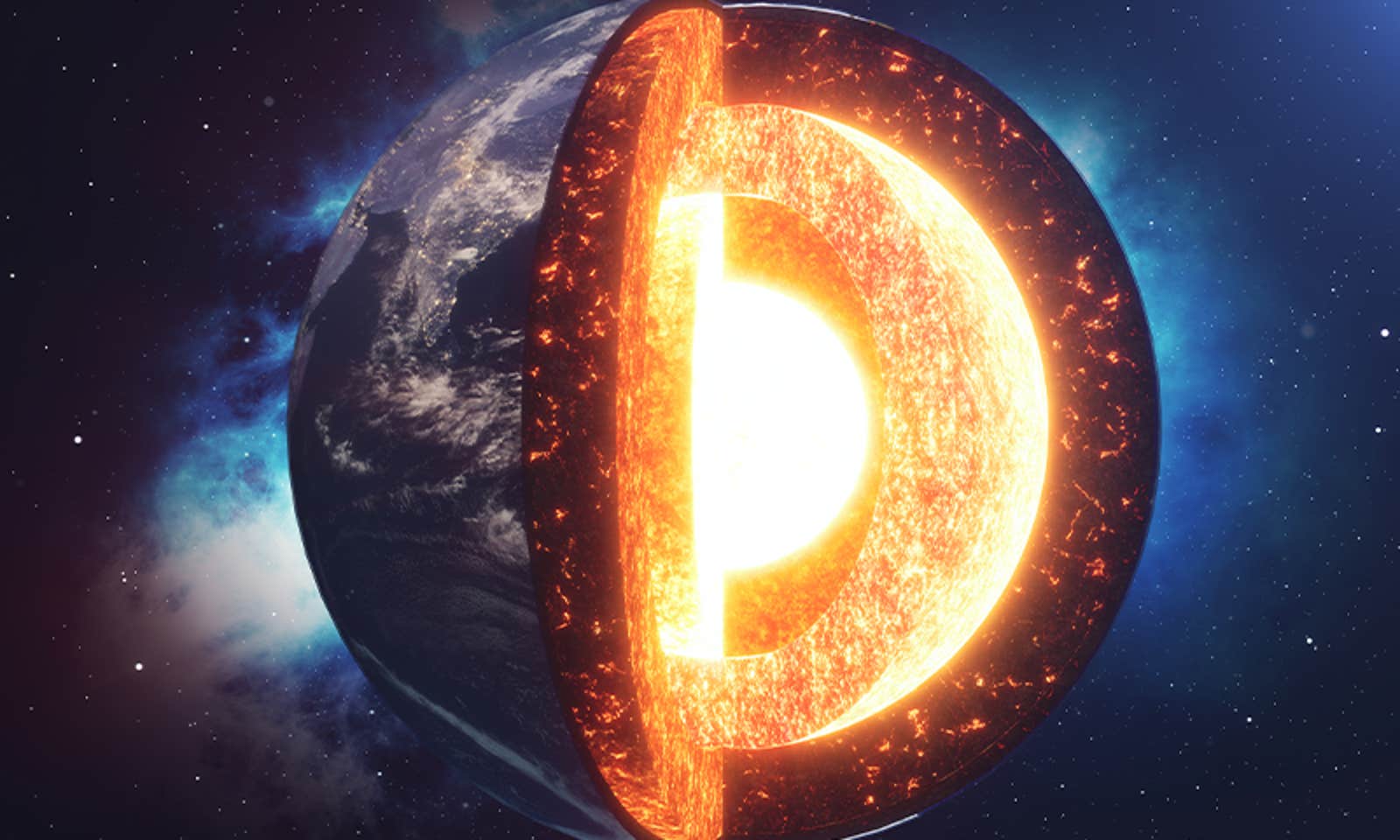Imagine living in an old house for years and finally getting access to a locked basement—only to discover a magical workshop where everything in the world is made. That’s a bit what it was like recently for geologists to finally get a good glimpse of the mantle, that vast middle layer of Earth that begins some 20 miles beneath the surface of the continents. Last month, an international research team published their analysis of the longest core sample of the mantle to date in Science.
The mantle, which constitutes 80 percent of Earth’s volume, is fundamental to the character of our planet: All crustal rocks—and everything derived from them, including our bones—can trace their origins to magmas that melted out of it. Our atmosphere is continuously regenerated by mantle gasses exhaled by volcanoes, then processed by algae and plants. The mantle’s movements also dictate how fast tectonic plates travel at the surface, shifting continents, building mountains, and unleashing earthquakes. On the ocean floor, seawater makes deep inroads into fractured mantle rocks. This cooks up compounds like methane that support bizarre microbial ecosystems without sunlight—a possible window into the origin of life.
We’re lucky that certain geologic processes sometimes deliver mantle rocks to the surface, because the mantle is an otherwise elusive thing to study. The green-sand beaches of Hawaii, for example, are blanketed by mantle-derived crystals of the mineral olivine. Erupting lava flows carried these crystals up, and then erosion and weathering separated them.
But Hawaii’s green sand, marvelous as it is, offers a limited view of the mantle below. In some ancient mountain belts, like those in Newfoundland and Oman, slabs of mantle rock have been shoved above sea level—the result of continents colliding and the intervening ocean lithosphere getting caught in between. But in such places, tectonic deformation can overprint features that could reveal how mantle melts find their way to the surface, or how water insinuates itself into rocks deep below the seafloor.

To sample the mantle directly, scientists have to drill down into it, but no drill hole on land had ever reached that far down beneath the continents. Even in the oceans, where the crust is thinner, the challenges of drilling in deep water—including keeping a ship stationary over a tiny hole on the seafloor when the drill bit needs to be changed—have thwarted attempts to obtain long, continuous core samples.
That changed last year when a shipboard research team—representing 10 countries and more than two dozen institutions, and funded by the International Ocean Discovery Program—set out to a site near the Mid-Atlantic Ridge, in the North Atlantic. This is where faults have brought mantle rock close to the seafloor. The location isn’t far from a system of seafloor springs or seeps called the “Lost City Hydrothermal Field,” where otherworldly spires of white calcite rise as high as 200 feet above the seafloor. After drilling a 180-foot test hole near Lost City, the shipboard team retrieved the deepest and continuous mantle drill core ever taken: about three quarters of a mile, more than six times longer than any prior sample. With a comparably puny diameter—just two and a half inches—the sample’s like a strand of uncooked spaghetti.
All crustal rocks—and everything derived from them, including our bones—can trace their origins to magmas.
The successful extraction of the core came down to the expertise of the drillers and technical staff of the research ship, the Joides Resolution, who used their decades of experience to make on-the-spot decisions about how fast to drill, when to pause, and how to cope in bad weather, says Susan Q. Lang, a co-author of the Science paper and scientist at the Woods Hole Oceanographic Institution, in Massachusetts. “Sampling hard rocks is incredibly difficult and there is a very high failure rate,” she says. “This is an incredible technical feat.”
Although the core does not overturn any paradigms about how the upper mantle works, it does bring into sharper focus mantle processes that could only be speculated about before. Perhaps the most dramatic finding was that seawater infiltrates the mantle and transforms its rocks to serpentinite at much greater depths than previously thought. The researchers, led by Johan Lissenberg, a geochemist at Cardiff University in the United Kingdom, found as much serpentinite at the bottom of the core as at the top, though oxygen-rich waters only reached the uppermost part. These findings indicate that the boundary between the rocky earth and ocean water is far less well defined than we imagined. The mantle rocks and the water are both changed through their interactions. On a global scale, the passage of water through seafloor rocks mediates global ocean chemistry, which has profound effects on the biosphere.

Another surprise was that in all parts of the core, the serpentinized zones had more elaborate geometries than expected—not simply along planar fractures, but in mesh-like networks of altered rock. The core sample also showed evidence of distinct episodes of fluid infiltrating the mantle over long periods of time, which likely contributed to the labyrinthine nature of the altered zones. These revelations underscore the idea that it is not just water that makes this planet distinctive—rather it is the constant, intimate interactions between that water and the solid Earth that make our home world exceptional. Water, rock, and life are in constant conversation, exchanging elements and energy—endlessly reacting, recrystallizing, recreating.
The sections of the core less exposed to seawater also contained secrets. The research team was able to read the record of the rocks’ magmatic origins beneath the crust, helping to shed new light on seafloor spreading, one of the signature processes in Earth’s plate tectonic system. The Mid-Atlantic Ridge is part of the world-wide chain of volcanic fissures—the longest mountain range on the planet—where new basaltic ocean crust erupts in batches, causing the ocean basins to widen by a few centimeters a year. The new core suggests that magmas may percolate through elaborate networks of fine fractures, challenging earlier notions that lavas rise to the surface via a few well-defined conduits. It’s yet another reminder that our models of how nature works are almost always oversimplified: The closer we look, the more complexity we find.
The only thing dimming the historic core recovery is the announcement that the International Ocean Discovery Program is being downsized, and that the ship that has made deep-ocean drilling possible, the much-beloved Joides Resolution, is being retired. This has come as a bitter surprise to geoscientists who hoped the door to the Earth’s magical subterranean workshop would remain unlocked. ![]()
Lead image: Rost9 / Shutterstock
Prefer to listen?




























